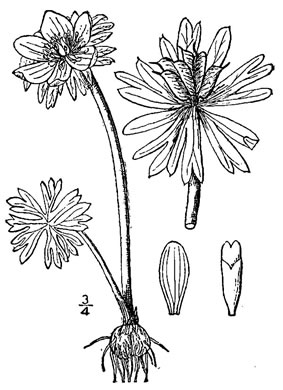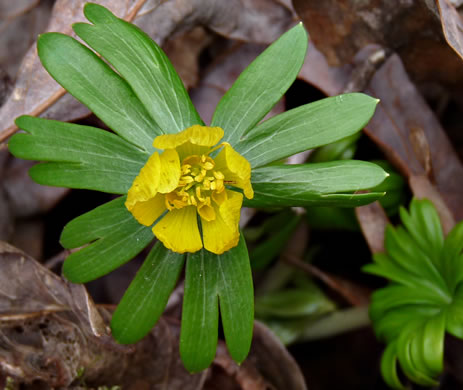Spermatophytes (seed plants): Angiosperms (flowering plants): Eudicots: Ranunculales
WEAKLEY'S FLORA OF THE SOUTHEASTERN US (4/24/22):
Eranthis hyemalis
FAMILY
Ranunculaceae
Go to FSUS key
Dig deeper at SERNEC, a consortium of southeastern herbaria.
Learn more about Winter Aconite from the Vascular Plants of North Carolina.
SYNONYMOUS WITH
PLANTS NATIONAL DATABASE:
Eranthis hyemalis
FAMILY
Ranunculaceae
SYNONYMOUS WITH Floristic Synthesis of North America. BONAP (Kartesz, 2021)
Eranthis hyemalis
SYNONYMOUS WITH Flora of North America
Eranthis hyemalis
COMMON NAME:
Winter-aconite
To see larger pictures, click or hover over the thumbnails.
Richard and Teresa Ware rtw_eranthis_hyemalis
March
Solitary flower subtended by deeply lobed [bracts]. Basal lvs appear later, per The Southern Living Garden Book.
WEAKLEY'S FLORA OF THE SOUTHEASTERN US (4/24/22):
Eranthis hyemalis
FAMILY
Ranunculaceae
SYNONYMOUS WITH
PLANTS NATIONAL DATABASE:
Eranthis hyemalis
FAMILY
Ranunculaceae
SYNONYMOUS WITH
Floristic Synthesis of North America. BONAP (Kartesz, 2021)
Eranthis hyemalis
SYNONYMOUS WITH
Flora of North America
Eranthis hyemalis
If a search such as "Carex leptalea var. leptalea" doesn't deliver the results you want, try "Carex leptalea".
Or, to minimize chances of a misspelling, try just "Carex le".
Less is more: If "pencil flower" doesn't deliver the results you want, try "pencil".



